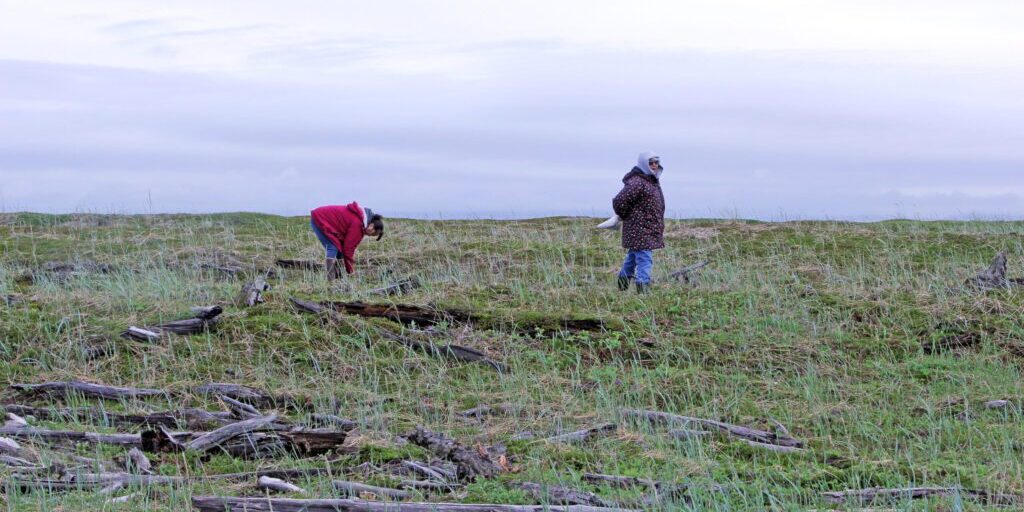Last week, Norton Sound Health Corporation held its first ever Plant Symposium in Nome, funded by the Alaska Native Tribal Health Consortium. The mini grant for hosting an Alaska Plants as Food & Medicine Symposium was funded directly from registrations of ANTHC’s 2016 Anchorage-based symposium.
Darlene Trigg, Cultural Lead at NSHC, says the organization has long been trying to find a way to implement local knowledge on the natural healing powers of tundra plants.
“The timing was right. It felt really good to bring our traditional healers into the space and allow them to be the catalyst for sharing information about local plants.”

The symposium was held for two days, June 26-27. Leading the group of about 30 participants were NSHC’s four traditional healers. Etta Tall, a former NSHC tribal healer who now lives in Chevak, also returned to Nome to share her knowledge at the event.
According to Trigg, the group spent the first morning:
“…Really grounding ourselves in the idea that our traditional knowledge is valid and that it’s transferred in ways that are not considered conventional education systems, but that we’re constantly in this place and space of learning from each other and from our family members.”
She added that another important aspect of the event was respecting and understanding that different families in the region have different ways of harvesting and using local plants — each of which have value.
One participant, Sherri Anderson, grew up in Shishmaref and learned to harvest greens alongside her family.
“Growing up, our elders always said, ‘whatever grows in our land or whatever comes from our seas, God knows we needed that for either consumption or for healing.’”
Anderson says she is still learning about the uses of some plants, and the symposium helped further her knowledge.
“I didn’t know about the yarrow. I mean, I knew what the plant was, but I didn’t know what the benefits were of it. I like that phrase ‘you learn something new every day!’”
Yarrow is a little plant which Darlene Trigg describes as looking like a “piece of broccoli on top but with white flowers.” Its medicinal properties help with a variety of skin conditions, and it can be used as an antifungal. The plant was a main ingredient in a slow-cooker-infused oil that participants concocted last week.
“We went heavy on the yarrow because it seems like there’s a lot of mosquitos out this time of year, and we wanted to make sure that people had something they could put on mosquito bites.”
The oil, also infused with tundra tea and stinkweed, was then used to make a salve, which can be used like an ointment to soothe and protect the skin.
Knowledge of the healing powers of tundra plants is something that’s been passed on for generations in Western Alaska. In a moment of chance during the Plant Symposium, that cultural tradition aligned with another one: indigenous tattooing. Evelyn Karmun, a tribal healer and elder, decided to get tattooed by a traditional tattoo artist who participated in the symposium. Trigg reflected on the moment she called “a special gift.”
“She just happened to have all her supplies, and the magic felt right, and so, we just made some space and time for that to occur during the lunch hour [laughs]… isn’t it just amazing to think about, like, that’s an elder. A person who is in her own right: a woman, grandmother, traditional healer, a traditional doctor. And to see her excitement over reclaiming those traditional practices.”
Participants seem to be keen on going back to their roots, whether through supporting traditional tattooing or learning more about the plants collected throughout the region’s history.
NSHC’s plant symposium ended with the group venturing outside to harvest plants around Nome. With summer in full swing, now is prime time for picking healing plants like yarrow, stinkweed, and, soon, berries out on the tundra.
Image at top: Anne Marie Ozenna and Eva Menadelook search the tundra for local plants to harvest just past the Cape of Nome. Photo: Sara K. Bowman, used with permission.





